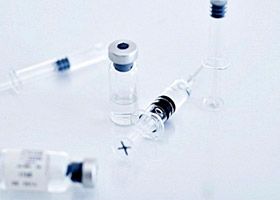Acquired primary hypogonadism
Last reviewed: 23.04.2024

All iLive content is medically reviewed or fact checked to ensure as much factual accuracy as possible.
We have strict sourcing guidelines and only link to reputable media sites, academic research institutions and, whenever possible, medically peer reviewed studies. Note that the numbers in parentheses ([1], [2], etc.) are clickable links to these studies.
If you feel that any of our content is inaccurate, out-of-date, or otherwise questionable, please select it and press Ctrl + Enter.
Acquired primary hypogonadism can have a different genesis. It can be the outcome of infectious-inflammatory lesions of testicles and / or their appendages. A frequent cause of male hypogonadism and infertility are inflammatory processes directly in the testicles (orchitis, orchid epididymitis) and in the vas deferens (epididymitis, trimertitis, vesiculitis ). With orchites that have arisen on the soil of mumps before puberty, the disease proceeds more favorably than in adult males.
Causes of the acquired primary hypogonadism
The cause of hypogonadism may be dropsy, which in children is almost always congenital, and in adults it occurs as a result of acute epididymitis.
Partial atrophy of the testis is possible due to surgery for inguinal hernia, circulatory disorders in it, twisting of the spermatic cord. First, the venous changes, and then the arterial blood supply, as a result of a testicular heart attack. These changes are irreversible.
Patanatomy of acquired primary hypogonadism. Acquired primary hypogonadism is due to atrophic changes in the testicles, affecting both the seminal epithelium and glandular. They arise with the status thymico-lymphaticus, with adiposogenital dystrophy. Irradiation of the testes is accompanied by cell death and marked degenerative transformations of Sertoli cells. Leydig cells can not only survive, but also undergo severe hyperplasia.
Degenerative changes in the seminal epithelium are observed in many infectious diseases (epidemic parotitis, smallpox, etc.). Leydig cells either remain intact or hyperplastic. Hyperplasia is relative in nature, as the size of the testicles decreases due to the death of the seminal epithelium, the hyalinosis of the basal membrane and the obliteration of the lumen of the tubules.
Pathogenesis
Atrophy of the testicles can be caused by the tuberculous process in them. In this case, the success of treatment depends on the timeliness of the diagnosis and the appointment of a specific treatment.
The unfavorable factors of the external environment include temperature effects. It should be borne in mind that the overall cooling of the body, as well as its overheating, especially in the genital area, sometimes causes degenerative changes in the sex glands. Exposure to high-frequency currents, chronic intoxication with industrial poisons, ionizing radiation can lead to hypogonadism.
Injuries of the testicles are a common cause of hypogonadism. Traumatic injuries of testicles include all kinds of mechanical effects that disrupt the processes of normal spermatogenesis and lead to their atrophy. In anamnesis, patients suffering from trauma refer to the blows to the genitals by the ball, foot, bruises from falling from a bicycle, a horse, etc.
Symptoms of the acquired primary hypogonadism
Symptoms of acquired primary hypogonadism. If the testicles are damaged in an adult male, then secondary sexual characteristics disappear: the facial and body hair disappear, the hair on the head, the fast aging of the skin (geraderma), sexual functions are disrupted (sexual desire and erections disappear, oligo- and azoospermia). If the testicles die before puberty, then a typical clinic of eunuchoidism appears.
 [14]
[14]
What do need to examine?
Who to contact?
Treatment of the acquired primary hypogonadism
 Treatment of acquired primary hypogonadism. In any case, primary hypogonadism is indicated by androgen replacement therapy, and in some cases, testicular transplantation. Usually, patients are prescribed injections of Sustanon-250 (or Omnadren-250) 1 ml intramuscularly once a month or injections of 10% testate solution per 1 ml every 10 days. Perhaps the use of oral medications: prociron-25 (Locolone) 1 tablet 3 times a day; when liver function is impaired, it is advisable to take andriol 1 capsule (in a 40 mg capsule of testosterone) 2-4 times a day.
Treatment of acquired primary hypogonadism. In any case, primary hypogonadism is indicated by androgen replacement therapy, and in some cases, testicular transplantation. Usually, patients are prescribed injections of Sustanon-250 (or Omnadren-250) 1 ml intramuscularly once a month or injections of 10% testate solution per 1 ml every 10 days. Perhaps the use of oral medications: prociron-25 (Locolone) 1 tablet 3 times a day; when liver function is impaired, it is advisable to take andriol 1 capsule (in a 40 mg capsule of testosterone) 2-4 times a day.

